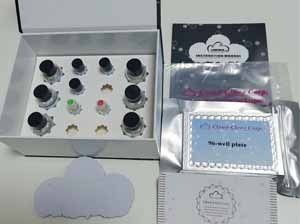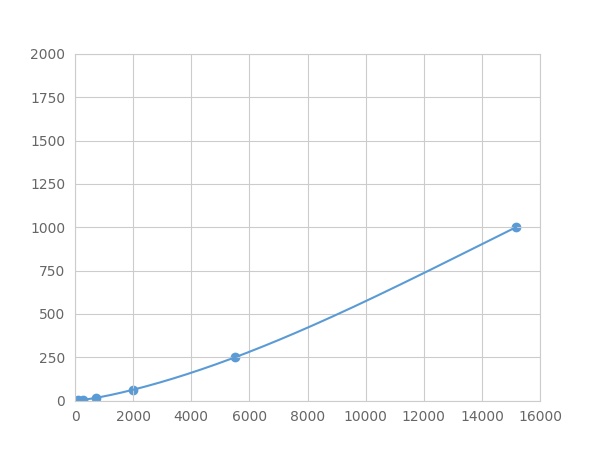Multiplex Assay Kit for Troponin T Type 2, Cardiac (TNNT2) ,etc. by FLIA (Flow Luminescence Immunoassay) 

CMH2; cTnT; TnTc; Cardiomyopathy,Hypertrophic 2; Cardiac muscle troponin T
(Note: Up to 8-plex in one testing reaction)
- UOM
- FOB US$ 437.00 US$ 454.00 US$ 479.00 US$ 512.00 US$ 546.00 US$ 596.00 US$ 672.00 US$ 840.00
- Quantity
Overview
Properties
- Product No.LMD232Hu
- Organism SpeciesHomo sapiens (Human) Same name, Different species.
- ApplicationsFLIA Kit for Antigen Detection.
Research use only - DownloadInstruction Manual
- CategoryCardiovascular biology
Sign into your account
Share a new citation as an author
Upload your experimental result
Review

Contact us
Please fill in the blank.
Recovery
Matrices listed below were spiked with certain level of recombinant Troponin T Type 2, Cardiac (TNNT2) ,etc. by FLIA (Flow Luminescence Immunoassay) and the recovery rates were calculated by comparing the measured value to the expected amount of Troponin T Type 2, Cardiac (TNNT2) ,etc. by FLIA (Flow Luminescence Immunoassay) in samples.
| Matrix | Recovery range (%) | Average(%) |
| serum(n=5) | 80-92 | 79 |
| EDTA plasma(n=5) | 86-95 | 90 |
| heparin plasma(n=5) | 78-95 | 87 |
Precision
Intra-assay Precision (Precision within an assay): 3 samples with low, middle and high level Troponin T Type 2, Cardiac (TNNT2) ,etc. by FLIA (Flow Luminescence Immunoassay) were tested 20 times on one plate, respectively.
Inter-assay Precision (Precision between assays): 3 samples with low, middle and high level Troponin T Type 2, Cardiac (TNNT2) ,etc. by FLIA (Flow Luminescence Immunoassay) were tested on 3 different plates, 8 replicates in each plate.
CV(%) = SD/meanX100
Intra-Assay: CV<10%
Inter-Assay: CV<12%
Linearity
The linearity of the kit was assayed by testing samples spiked with appropriate concentration of Troponin T Type 2, Cardiac (TNNT2) ,etc. by FLIA (Flow Luminescence Immunoassay) and their serial dilutions. The results were demonstrated by the percentage of calculated concentration to the expected.
| Sample | 1:2 | 1:4 | 1:8 | 1:16 |
| serum(n=5) | 87-101% | 82-93% | 97-105% | 97-105% |
| EDTA plasma(n=5) | 79-93% | 96-104% | 92-105% | 92-99% |
| heparin plasma(n=5) | 99-105% | 95-105% | 96-103% | 79-94% |
Stability
The stability of kit is determined by the loss rate of activity. The loss rate of this kit is less than 5% within the expiration date under appropriate storage condition.
To minimize extra influence on the performance, operation procedures and lab conditions, especially room temperature, air humidity, incubator temperature should be strictly controlled. It is also strongly suggested that the whole assay is performed by the same operator from the beginning to the end.
Reagents and materials provided
| Reagents | Quantity | Reagents | Quantity |
| 96-well plate | 1 | Plate sealer for 96 wells | 4 |
| Pre-Mixed Standard | 2 | Standard Diluent | 1×20mL |
| Pre-Mixed Magnetic beads (22#:TNNT2) | 1 | Analysis buffer | 1×20mL |
| Pre-Mixed Detection Reagent A | 1×120μL | Assay Diluent A | 1×12mL |
| Detection Reagent B (PE-SA) | 1×120μL | Assay Diluent B | 1×12mL |
| Sheath Fluid | 1×10mL | Wash Buffer (30 × concentrate) | 1×20mL |
| Instruction manual | 1 |
Assay procedure summary
1. Preparation of standards, reagents and samples before the experiment;
2. Add 100μL standard or sample to each well,
add 10μL magnetic beads, and incubate 90min at 37°C on shaker;
3. Remove liquid on magnetic frame, add 100μL prepared Detection Reagent A. Incubate 60min at 37°C on shaker;
4. Wash plate on magnetic frame for three times;
5. Add 100μL prepared Detection Reagent B, and incubate 30 min at 37°C on shaker;
6. Wash plate on magnetic frame for three times;
7. Add 100μL sheath solution, swirl for 2 minutes, read on the machine.

Test principle
Analyte-specific antibodies are pre-coated onto color-coded microparticles. Microparticles, standards, and samples are pipetted into wells and the immobilized antibodies bind the analytes of interest. After washing away any unbound substances, a biotinylated antibody cocktail specific to the analytes of interest is added to each well. Following a wash to remove any unbound biotinylated antibody, Streptavidin-Phycoerythrin conjugate (Streptavidin-PE), which binds to the biotinylated detection antibodies, is added to each well. A final wash removes unbound Streptavidin-PE and the microparticles are resuspended in buffer and read using the Luminex or Bio-Plex analyzer.The MFI developed is proportional to the concentration of analytes of interest in the sample.
Giveaways
Increment services
Citations
- Cardioprotective Effect of Sulphonated Formononetin on Acute Myocardial Infarction in RatsPubMed: 21232020
- Cardioprotective Effect of SMND-309, A Novel Derivate of Salvianolic Acid B on Acute Myocardial Infarction in RatsWiley: source
- Protective roles of Asperosaponin VI, a triterpene saponin isolated from Dipsacus asper Wall on acute myocardial infarction in ratsScienceDirect: S0014299909009984
- The altered expression profile of microRNAs in cardiopulmonary bypass canine models and the effects of mir-499 on myocardial ischemic reperfusion injuryPubMed: PMC3694448
- Salivary high‐sensitivity cardiac troponin T levels in patients with acute myocardial infarctionPubmed: 22834943
- In vivo and in vitro cardioprotective effects of Panax quinquefolium 20 (S)-protopanaxadiol saponins (PQDS), isolated from Panax quinquefoliumPubmed: 23700796
- The effects of caloric restriction and age on thyroid hormone signalling in the heart of ratsPl:Source
- Cardiomyopathy reverses with recovery of liver injury, cholestasis and cholanemia in mouse model of biliary fibrosisPubmed:24330504
- Cardioprotective Effect of Rhizomes of Acorus gramineus Against Isoproterenol-Induced Cardiac Damage in PigsPubmed:24420420
- Glutathione administration reduces mitochondrial damage and shifts cell death from necrosis to apoptosis in ageing diabetic mice hearts during exercisePubmed:25039894
- Crocin protects against doxorubicin-induced myocardial toxicity in rats through down-reCavia (Guinea pig )lation of inflammatory and apoptic pathwaysPubmed:26807765
- The Cardenolide Glycoside Acovenoside A Affords Protective Activity in Doxorubicin-Induced Cardiotoxicity in MicePubmed:27247000
- Troponins, heat shock proteins and glycogen phosphorylase BB in umbilical cord blood of complicated pregnancies.pubmed:27937003
- Outer Balloon Ligation Increases Success Rate of Ischemia-Reperfusion Injury Model in Mice.pubmed:27907155
- Rosuvastatin improves myocardial and neurological outcomes after asphyxial cardiac arrest and cardiopulmonary resuscitation in ratspubmed:28076830
- Imatinib attenuates cardiac fibrosis by inhibiting platelet-derived growth factor receptors activation in isoproterenol induced modelpubmed:28570599
- Cardioprotective effect of Notch signaling on the development of myocardial infarction complicated by diabetes mellituspubmed:29042932
- Increases in plasma corin levels following experimental myocardial infarction reflect the severity of ischemic injuryPubmed: 30192780
- Tissue suction-mediated gene transfer to the beating heart in micePubmed: 32027678
- Hormonal Response to Incremental and Continuous Exercise in Cyclists with Left Ventricle HypertrophyPubmed: 32148580
- Chlorogenic acid prevents acute myocardial infarction in rats by reducing inflammatory damage and oxidative stressPubmed: 33022535
- Norepinephrine Leads to More Cardiopulmonary Toxicities than Epinephrine by Catecholamine Overdose in RatsPubmed: 32947820
- Iron derived from autophagy-mediated ferritin degradation induces cardiomyocyte death and heart failure in mice33526170
- Pharmacological inhibition of arachidonate 12-lipoxygenase ameliorates myocardial ischemia-reperfusion injury in multiple species34536344
- Development of a novel ssDNA aptamer targeting cardiac troponin I and its clinical applications34673993
- Hydrogen therapy after resuscitation improves myocardial injury involving inhibition of autophagy in an asphyxial rat model of cardiac arrestPubmed:35495584








